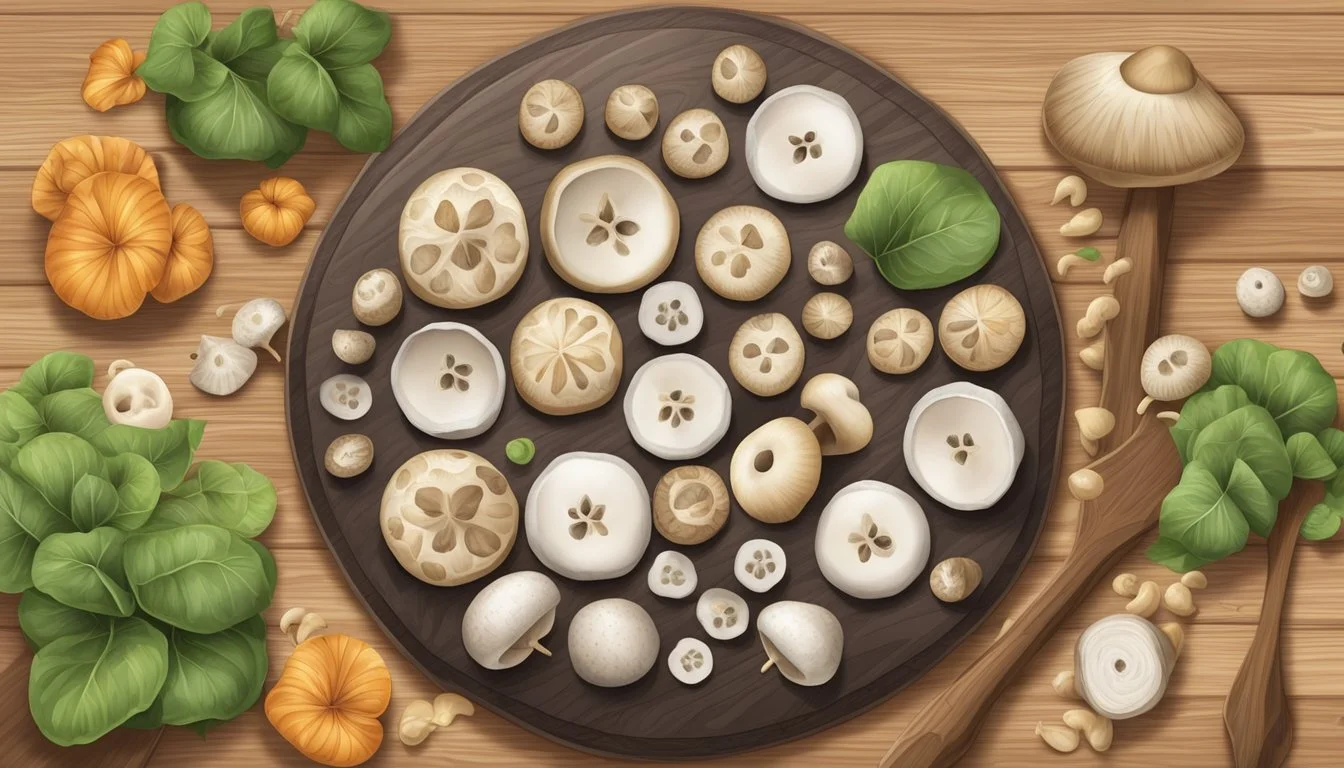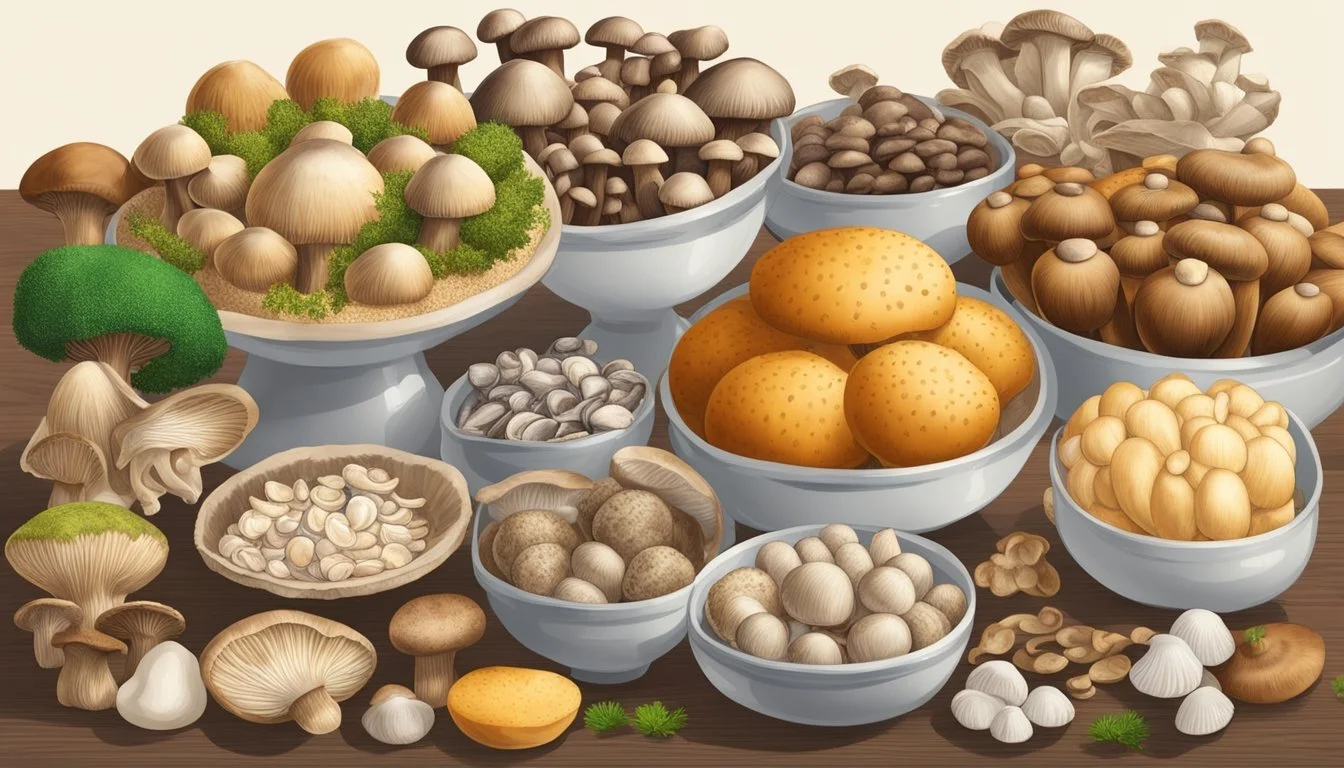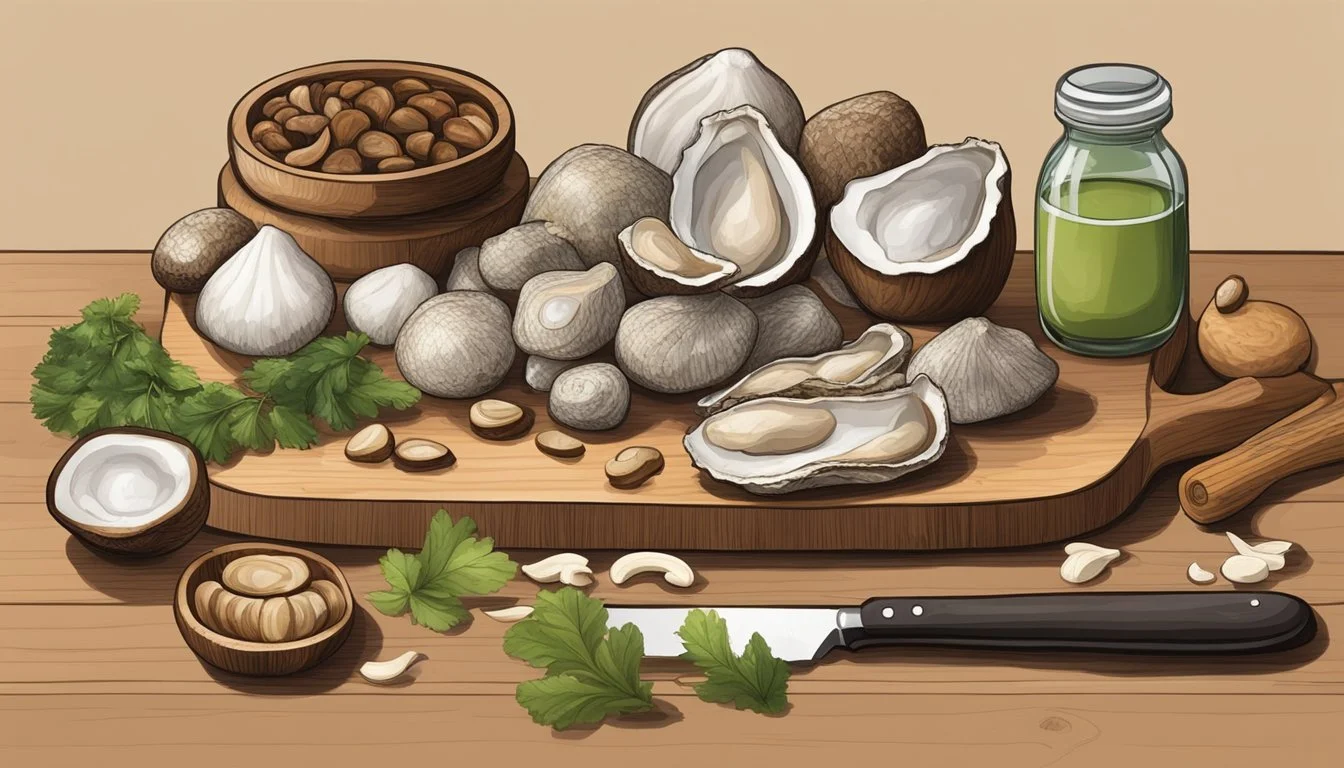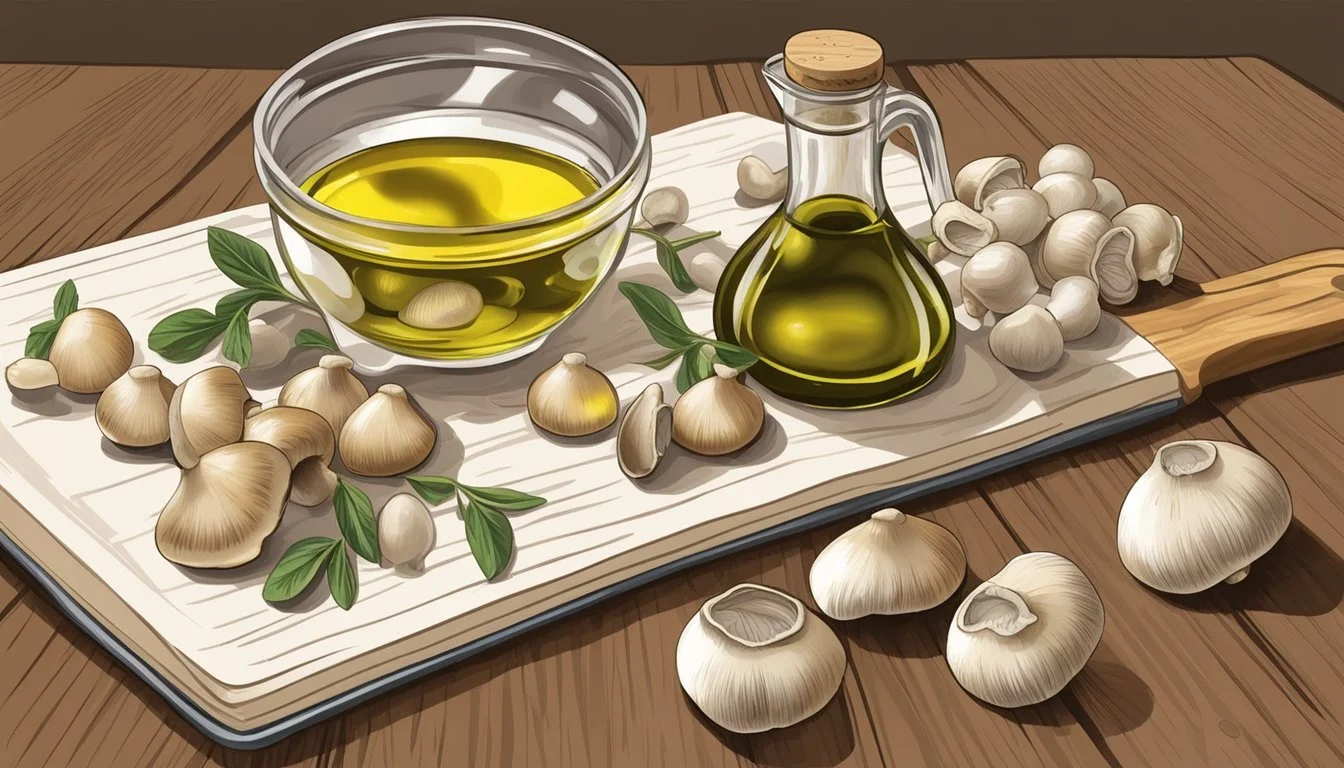Button Mushrooms Substitutes
Top Alternatives for Your Recipes
Button mushrooms are a popular ingredient in various dishes, but sometimes they can be hard to find or you might want to switch things up for a different flavor profile. Great substitutes for button mushrooms include cremini, portobello, shiitake, and oyster mushrooms. Each of these alternatives brings a unique taste and texture to your recipes, offering versatility in culinary applications.
Cremini mushrooms, also known as baby bellas, have a similar size and flavor to button mushrooms, making them a convenient substitute. Portobello mushrooms offer a meatier texture, perfect for hearty dishes like burgers or stews. Shiitake mushrooms provide a rich, savory taste with a slightly chewy texture, enhancing flavors in stir-fries and soups.
Oyster mushrooms stand out with their delicate and slightly sweet flavor, ideal for adding depth to sauces and pasta dishes. Exploring these substitutes can elevate your cooking and introduce new dimensions to your favorite recipes.
Understanding Button Mushrooms
Button mushrooms, also known as white mushrooms, are one of the most common varieties of edible fungi. They are praised for their mild flavor and firm texture, making them versatile ingredients in many culinary dishes.
Characteristics of Button Mushrooms
Button mushrooms are small to medium-sized with a smooth, white cap. The caps typically range between 1 to 3 inches in diameter. They have short, sturdy stems and tightly closed gills underneath the cap.
The flavor of button mushrooms is mild and slightly earthy. Their texture is firm when raw but becomes tender upon cooking, which makes them suitable for a variety of dishes.
Nutritional Profile
Button mushrooms are low in calories but rich in essential nutrients. A typical serving provides a good amount of B vitamins such as riboflavin, niacin, and pantothenic acid. They also contain selenium, potassium, and phosphorus.
The protein content of button mushrooms is relatively high for a vegetable. Additionally, they are a good source of dietary fiber and antioxidants, which help in combating oxidative stress.
Culinary Uses
Button mushrooms are incredibly versatile in the kitchen. They can be used in soups, salads, and sauces. Their ability to absorb flavors makes them ideal for dishes involving savory broths and seasonings.
Popular cooking methods include grilling, sautéing, and roasting. They can be used whole, sliced, or chopped, depending on the recipe requirements. Button mushrooms are a staple in many cuisines worldwide, often appearing in pasta dishes, stir-fries, and as pizza toppings.
Top Mushroom Substitutes
When looking for a substitute for button mushrooms, options like porcini, shiitake, cremini, oyster, and enoki mushrooms provide unique flavors and textures that can enhance a variety of dishes. Each type of mushroom brings its own culinary benefits and cooking techniques.
Porcini Mushrooms
Porcini mushrooms are prized for their rich, earthy flavor and meaty texture. They are often used in Italian cuisine and can add depth to soups, risottos, and sauces. Porcini mushrooms are typically sold dried, which requires soaking before use to rehydrate them.
The soaking liquid can be saved and used as a flavorful broth. Fresh porcini are less common but can be sautéed or grilled.
Porcini mushrooms are known for their strong umami flavor, making them an excellent substitute for button mushrooms in hearty dishes.
Shiitake Mushrooms
Shiitake mushrooms are known for their savory and slightly chewy texture. They provide a deep umami flavor, which can enhance a wide range of dishes from stir-frys to soups.
These mushrooms are available both dried and fresh; dried shiitake should be soaked before use. Shiitake mushrooms work well when sautéed or added to broths, offering a more robust taste compared to button mushrooms.
Their versatility and ability to absorb flavors make them a popular choice in both Asian and Western cuisine.
Cremini Mushrooms
Cremini mushrooms, also known as baby bellas, have a similar size and flavor to button mushrooms but with a slightly deeper and earthier taste. These mushrooms are actually just a more mature form of white button mushrooms and will often be labeled as such in stores.
Cremini mushrooms can be used in almost any dish that calls for button mushrooms, making them an easy and versatile substitute. They are especially good in soups, stews, and sauces, where their richer flavor can shine through.
Oyster Mushrooms
Oyster mushrooms have a delicate, slightly sweet flavor and a silky texture. They are often used in Asian cuisine, particularly in stir-frys and soups.
These mushrooms can be recognized by their fan-shaped caps and can be white, gray, or even pink. They cook quickly and can be sautéed, grilled, or baked.
Due to their tender texture, oyster mushrooms complement dishes that benefit from subtle mushroom flavors without overpowering other ingredients.
Enoki Mushrooms
Enoki mushrooms have a unique appearance with their long, thin stems and small caps. They offer a crunchy texture and a mild, slightly fruity flavor.
Enoki mushrooms are typically used in salads, soups, and as a garnish due to their delicate structure and subtle taste. They require minimal cooking and are often added to dishes at the end of the cooking process to maintain their crunch.
Enoki mushrooms provide a crisp contrast in texture compared to button mushrooms, making them an interesting substitute in lighter dishes.
Alternative Non-Mushroom Substitutes
When looking to replace button mushrooms with non-mushroom alternatives, there are several options available. These alternatives can offer different flavors and textures, enhancing a variety of dishes.
Tofu as a Substitute
Tofu is a versatile non-mushroom substitute known for its ability to absorb flavors. It's rich in protein and contains important nutrients such as iron. Tofu can be used in a variety of dishes, including stir-fries, soups, and even as a stuffing ingredient.
To prepare, tofu can be sautéed, fried, or roasted. Its mild flavor allows it to complement almost any seasoning or sauce. This makes tofu an excellent choice for those looking to replicate the meaty texture and versatility of button mushrooms.
Eggplant and Its Uses
Eggplant is another excellent substitute for button mushrooms, offering a unique texture and flavor. Its slightly bitter taste can add depth to a dish. Eggplant can be used in recipes where mushrooms are typically grilled, roasted, or stuffed.
When cooked, eggplant becomes tender and absorbs the flavors of the accompanying ingredients. This makes it a suitable substitute in dishes like stir-fries, casseroles, and baked creations. For best results, slice the eggplant into thin pieces and ensure it is well-seasoned.
Zucchini in Recipes
Zucchini is a versatile vegetable known for its mild flavor and adaptable texture. This makes it a great non-mushroom substitute in many dishes. Zucchini can be used sliced, diced, or even spiralized for noodles, depending on the recipe.
It works well in stir-fries, grilled dishes, and can even be stuffed with a variety of fillings. Its ability to blend well with other flavors makes zucchini a go-to option for a healthy and nutritious alternative to button mushrooms.
Other Vegetable Substitutes
Several other vegetables can serve as effective substitutes for button mushrooms. For instance, bell peppers, carrots, and cauliflower can be used in various dishes to add color and texture. Each of these vegetables offers unique flavors, making them suitable for enhancing different recipes.
Bell peppers can be stir-fried or grilled, providing a sweet and crunchy texture. Carrots can be diced and used in soups or roasted for a slightly sweet and earthy flavor. Cauliflower can be riced or used in vegetarian dishes to provide a neutral base that absorbs surrounding flavors.
These options allow for a diverse range of non-mushroom substitutes to satisfy different culinary needs.
Enhancing Flavors and Textures
Enhancing the flavors and textures of button mushroom substitutes involves strategic use of herbs, spices, garlic, onions, and various cooking methods. These techniques add depth, earthiness, and a robust umami profile to your culinary creations.
Using Herbs and Spices
Incorporating herbs and spices can elevate the natural flavors of mushroom substitutes. Fresh herbs like thyme, rosemary, and parsley introduce aromatic notes. Dried herbs offer concentrated flavors that permeate well, especially in longer cook times.
Spices such as paprika, cumin, and pepper deliver warmth and complexity. A dash of nutmeg or cinnamon can surprisingly complement earthy flavors. Use these seasonings sparingly to avoid overpowering the mushrooms' taste.
Combining these with a bit of salt enhances the overall umami and natural savory elements.
Garlic and Onion Techniques
Garlic and onions are essential for enhancing mushroom flavors. Finely chopped garlic should be sautéed until golden to release its natural sweetness and reduce bitterness. This process helps it blend seamlessly with the mushrooms' umami.
Similarly, onions can be used in various forms. Caramelized onions add a deep, sweet, and savory flavor. Alternatively, finely chopped onions sautéed until translucent can create a delicate, sweet base. Adding scallions or shallots introduces a mild, nuanced onion flavor that complements many recipes.
Layering these ingredients creates a complex and satisfying profile.
Cooking Methods for Maximum Flavor
Different cooking techniques can drastically affect the flavors and textures of mushroom substitutes. Sautéing mushrooms in a small amount of oil on high heat develops a rich, golden-brown exterior while preserving a tender interior. This method enhances their natural umami.
Roasting in the oven brings out deep, earthy flavors. Season with herbs and spices before roasting to let them infuse into the mushrooms. Grilling is another option, introducing a smoky, charred quality that adds depth.
For a tender, meaty texture, braising mushrooms in broth or wine retains moisture and flavor, making them a hearty addition to any dish. Using these methods strategically will maximize their culinary potential.
Health Considerations and Benefits
Button mushroom substitutes can be nutritious and offer various health benefits. It is important to consider the nutritional value and potential allergens associated with these alternatives.
Pros of Mushroom Substitutes
Mushroom substitutes such as cremini, portobello, and shiitake mushrooms offer a range of health benefits. They are rich in vitamins and minerals like B vitamins, vitamin D, selenium, and potassium.
Cremini mushrooms contain essential amino acids and are a good source of antioxidants, which help reduce inflammation.
Portobello mushrooms provide a meaty texture and can be an excellent source of protein for plant-based diets. They also contain important nutrients such as calcium and iron.
Shiitake mushrooms are known for their immune-boosting properties due to the presence of compounds like polysaccharides and beta-glucans. They are also rich in B vitamins and trace minerals.
Considering Allergies and Dietary Restrictions
When choosing a substitute for button mushrooms, it is essential to be aware of potential allergies. Some individuals may be allergic to certain types of mushrooms.
Tofu and zucchini are great non-fungal alternatives, especially for those with mushroom allergies. Tofu is protein-rich and provides essential amino acids. Zucchini, on the other hand, is low in calories but high in vitamins and minerals.
For those following specific diets, like vegan or gluten-free, chestnut mushrooms can be a perfect substitute as they complement a variety of dietary needs.
Overall, incorporating these substitutes can enhance nutrition while accommodating different health considerations.
Exploring Mushroom Varieties in Cooking
Different mushroom varieties offer unique flavors and textures, making them versatile ingredients in a wide array of culinary dishes. This section details the distinct characteristics and uses of chanterelle and maitake mushrooms, Asian mushroom varieties, and European mushroom types.
Chanterelle and Maitake in Cuisine
Chanterelle mushrooms, known for their funnel shape and golden color, provide a fruity aroma and peppery flavor. They're ideal for sautéing, adding to risottos, and pairing with game meat. Their delicate texture makes them a prized ingredient in many gourmet recipes.
Maitake mushrooms, also called hen-of-the-woods, have a rich, earthy flavor and a feathery, clustered form. They are commonly used in stir-fries, soups, and roasted dishes. Their meaty texture and robust taste make them suitable for substituting meat in various vegetarian recipes.
Asian Mushroom Varieties
Asian cuisines frequently use mushrooms such as shiitake, enoki, and wood ear. Shiitake mushrooms offer a savory flavor and firm texture, making them ideal for soups, stir-fries, and even as a meat substitute in dishes like Asian-style burgers.
Enoki mushrooms feature long, thin stems and tiny caps, delivering a mild taste and crunchy texture. They are perfect for salads, soups, and Japanese hot pots. Wood ear mushrooms, with their chewy texture and subtle flavor, are often used in Chinese cuisine, particularly in soups and stir-frys.
European Mushroom Types
European mushrooms such as porcini, morel, and portobello are staples in many traditional dishes. Porcini mushrooms, known for their intense, earthy flavor, are widely used in Italian recipes, especially in pastas and risottos. They are available fresh or dried, with the latter providing a concentrated flavor.
Morel mushrooms are characterized by their honeycomb appearance and nutty, earthy flavor. They are often sautéed and added to upscale sauces and stews. Portobello mushrooms, with their meaty texture and deep, rich flavor, are great for grilling and can substitute for meat in dishes like burgers.
By understanding the variety and characteristics of these mushrooms, cooks can experiment with different flavors and textures to enhance their culinary creations.






